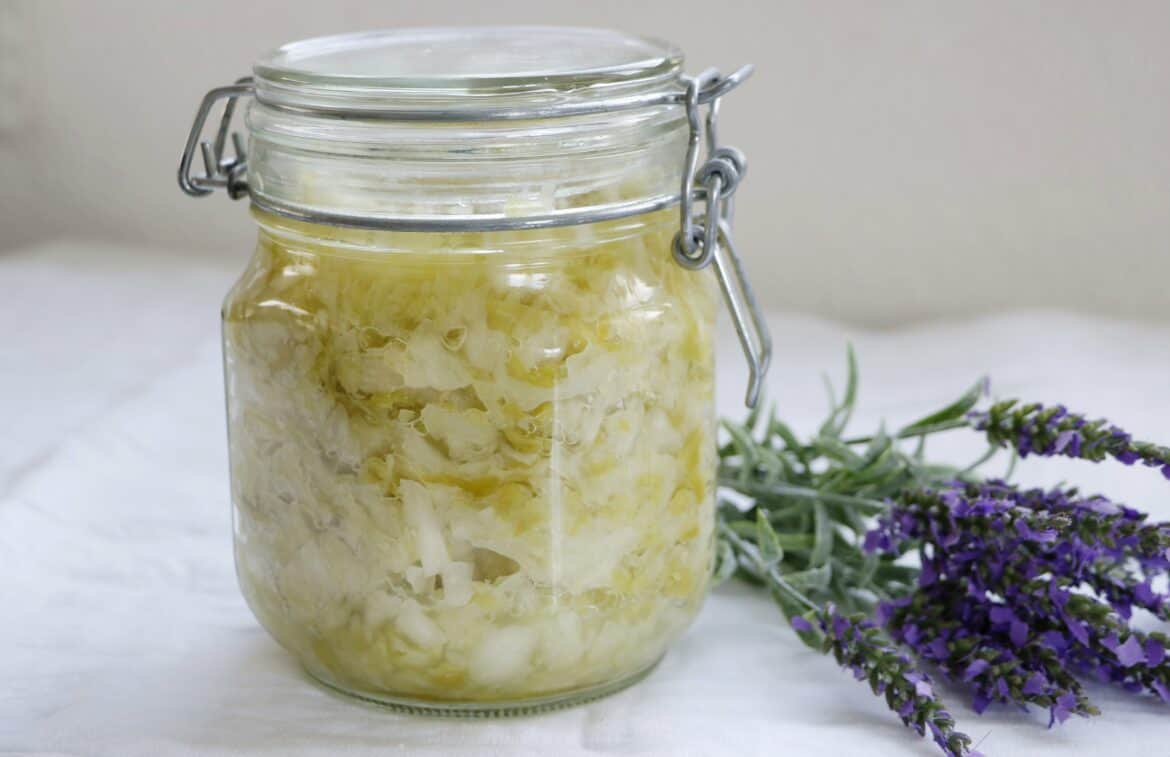How to make Sauerkraut : A step by step process
Since, we had a good harvest of the cabbages in July from our spring planting, I couldn’t always cook cabbages. So I had to find other ways to use the abundance of our garden produce. The best way to preserve this summer abundance for the winter would be by learning how to make Sauerkraut.
My husband on the other hand is used to eating sauerkraut. He knew how to make it from his mother by watching her as a kid. My mother-in-law had a vegetable garden and those days they had no supermarkets which sold all year around fresh cabbages or other exotic foods. So what ever they harvested from the summer garden they use to preserve for winter.
Health Benefits of Sauerkraut
All my life I have been eating fermented food as the proof of it is in my gut. I have a healthy gut flora and digestion.
Sauerkraut is a good source of pro- biotic , due to its fermentation is very important for your gut. The fiber and supply of pro-biotics improve digestion and promote the growth of healthy bowel flora, protecting against many diseases of the digestive tract.
You can look up at the health benefits of eating fermented foods here, Health benefits of fermenting
How to make Sauerkraut Video
Recipe for 1 kg of cabbages
This is what we came across out after much researching on the internet. You can tweak this recipe according to the amount of cabbage you have at hand. You can watch the video by clicking. Scroll down for the printable version of the recipe.
Ingredients:
White Cabbages after removing the outer leaves: 1 kg
Himalaya pink salt ( best to use non-flouridated salt) : 10 gm
Whole coriander: 1 teaspoon Whole black pepper: 1 teaspoon
Method
Halve the Cabbages and remove the outer leaves. Save up the leaves as you will need them later.
Remove the hard stem from the center by quartering the cabbages.
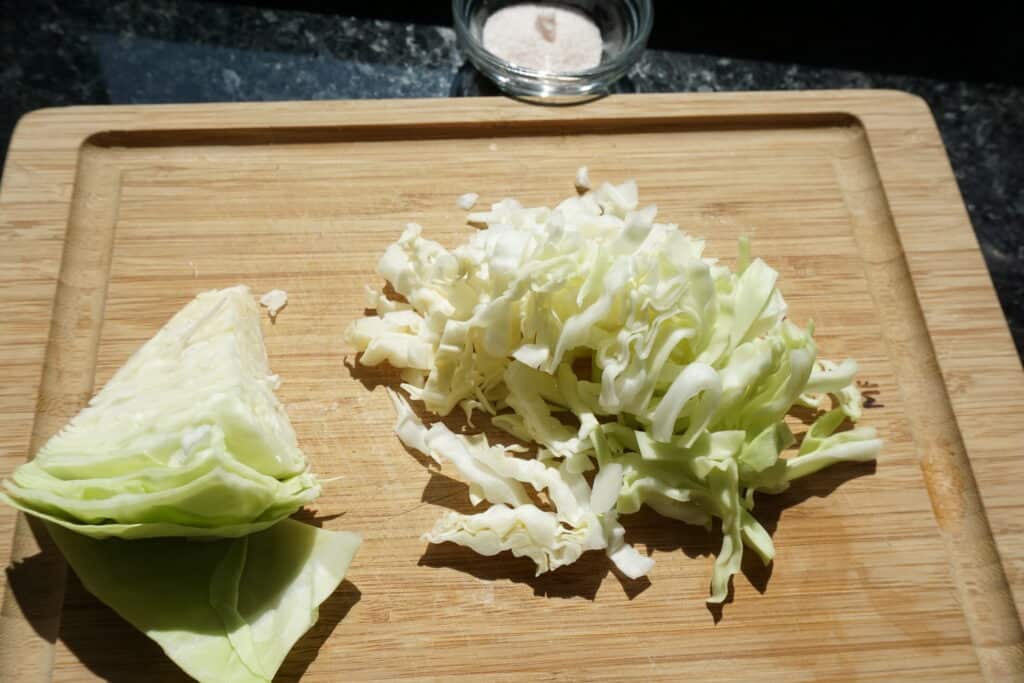
Grate them with a food processor or a hand grater. If you have not much quantity and just want to do 1 cabbage, you can cut them thinly too.
In a large bowl add all the grated cabbages and add the salt and crush the cabbages to extract the juice. The cabbages have to be preserved in its own juice.
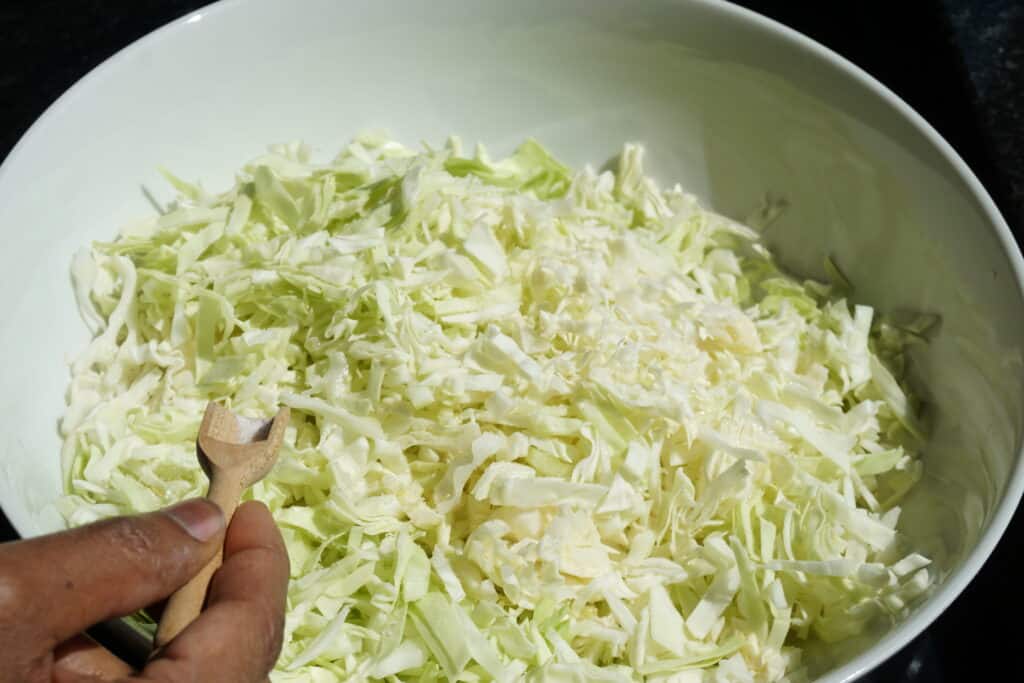
You don’t need to wash the cabbages, just remove out the outer leaves. As washing the cabbages can destroy the good bacteria.
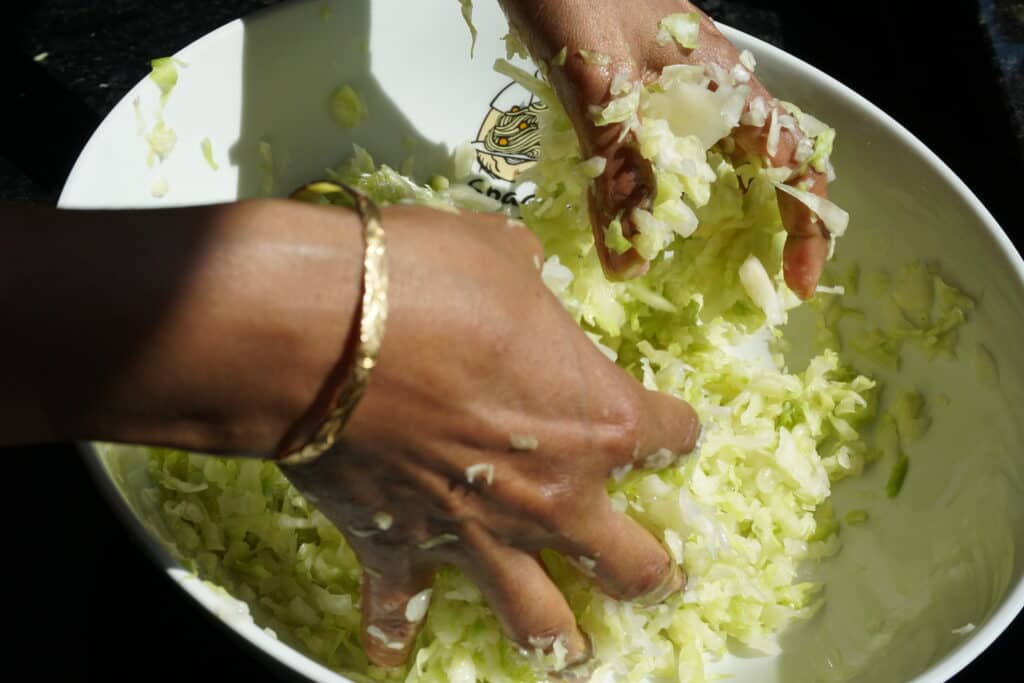
When the cabbages are crushed enough it will start oozing its juices. Add the spices and mix well.
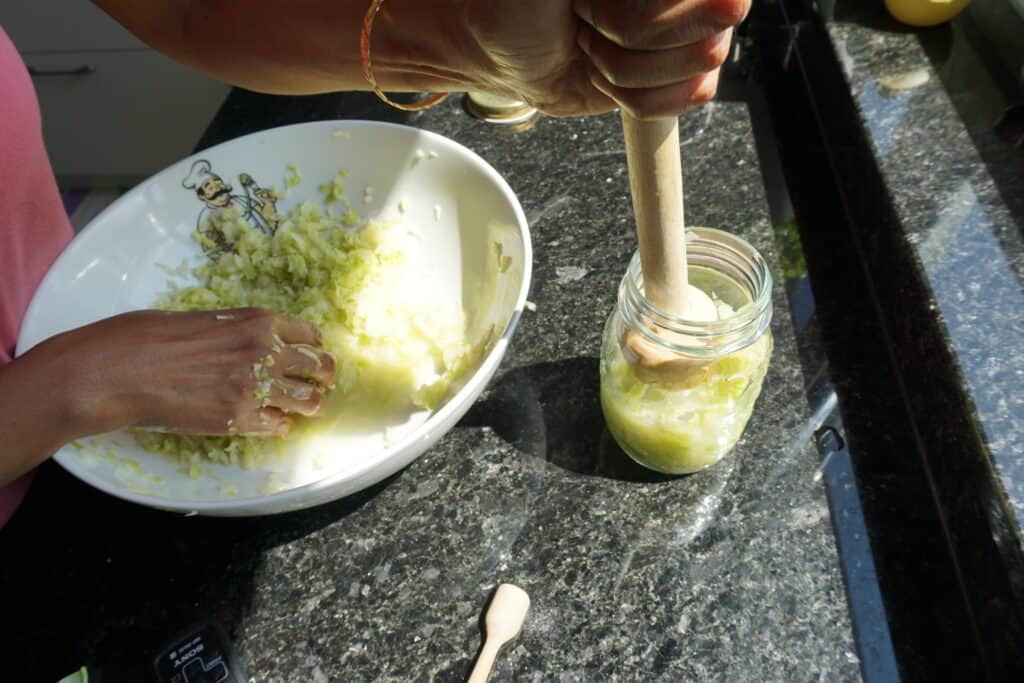
Fill the grated cabbages into sterilized dry glass jars.
Cover the grated cabbages with the outer leaves that you saved up earlier. Make sure that the cabbage is covered in its own juices. In case there isn’t enough, just add some boiled and cooled salt water to it.

The cabbage, the outer leaves should be covered with the liquid. Add a sterilized stone or a small glass cup filled with salt water to fit into the jar and seal the jars. There should be enough weight to press down the cabbage.
The stone helps in keeping the cabbages covered in the juices.
Close the jars and keep it at room temperature for about 8 to 10 days and then transfer the jars to a cooler place like your cellar. Don’t open the jars at this stage.
TIPS TO MAKE SAUERKRAUT
There are some special Mason jar lids specifically for ferments. These Silicone vents help with the Carbon-di-oxide to escape when the fementing takes place. As the gas escapes the liquid will be intact.
You can set the jars in a bowl as when the fermenting takes place the liquid may flow out of the jars.
PIN IT FOR LATER

Halve the Cabbages and remove the outer leaves. Save up the leaves as you will need them later. Remove the hard stem from the center by quartering the cabbages. Grate them with a food processor or a hand grater. If you have not much quantity and just want to do 1 cabbage, you can cut them thinly too. In a large bowl add all the grated cabbages and add the salt and crush the cabbages to extract the juice. The cabbages will be preserved in its own juice. You don't need to wash the cabbages, just remove out the outer leaves. As washing the cabbages can destroy the good bacteria. When the cabbages are crushed enough and its oozing with its juices. Add the spices and mix well. Fill the grated cabbages into sterilized dry glass jars. Cover the grated cabbages with the outer leaves you saved up earlier. Make sure that the cabbage is covered in its own juices. In case there isn't enough, just add some boiled and cooled salt water to it. The cabbage, the outer leaves should be covered with the liquid. Add a sterilized stone or a small glass cup to fit into the jar and seal the jars. The stone helps in keeping the cabbages covered in the juices. Close the jars and keep it at room temperature for about 8 to 10 days and then transfer the jars to a cooler place like your cellar. Don't open the jars at this stage. You can set the jars in a bowl as when the fermenting takes place the liquid may flow out of the jars. 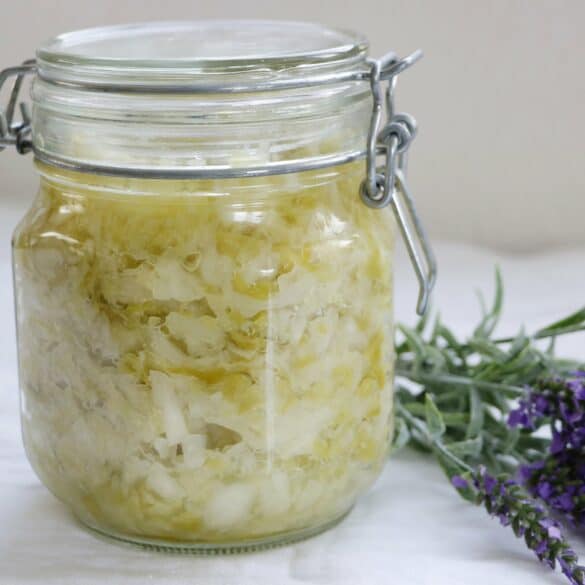
Ingredients
Instructions

